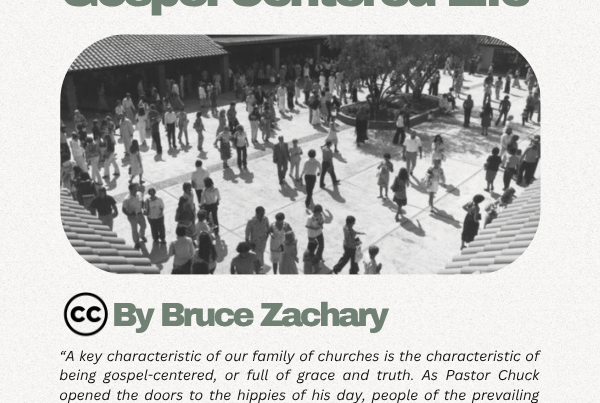
In any form of storytelling, authors frequently employ modes of comparison between characters. Sometimes characters complement one another, resembling each other’s traits, actions, or other distinguishing features (e.g., Frodo and Bilbo in The Lord of the Rings). Other times characters act as literary foils to one another, each representing opposite characteristics of the other (e.g., Harry and Draco in Harry Potter, or Edward and Jacob in Twilight).
Characters who have similar features can be considered analogous or in analogy with one another. Character analogy is one tool the biblical authors used to portray characters in Scripture in vivid, three-dimensional portraits. In this short study, we will consider how the author of 1 Samuel used character analogy to craft a dynamic, multifaceted presentation of a woman named Hannah.
The author opens 1 Samuel by introducing us to a man named Elkanah. After telling us where he was from and what family he belonged to, the author gives us information about Elkanah’s immediate family, information that launches us into a character analogy. First, we are told that Elkanah had two wives: “The name of the one was Hannah, and the name of the other, Peninnah. Peninnah had children, but Hannah had no children” (1 Sam. 1:2; ESV). Does this sound familiar? A Hebrew man with two wives, one of whom is infertile?
Scripture is full of infertile wife stories. In three of these instances, the infertile wife has a rival: Sarah and Hagar; Leah and Rachel; and Hannah and Peninnah. We will focus on the similarities between Hannah and the Sarah-Hagar stories, first noting how Hannah resembles Sarah, then observing her similarities to Hagar.
Hannah = Sarah
The obvious parallel between Hannah and Sarah is their barrenness at the beginning of their stories. In fact, no sooner is Sarah (then known as Sarai) introduced into the drama of Genesis before her infertility is revealed: “Now Sarai was barren; she had no child” (Gen. 11:30; ESV). Along with the promise of inherited land, hope in God’s promise of offspring is the central motif of the whole Abrahamic narrative (e.g., Gen. 12:2, 7; 13:15-16; 15:3, 18; 17:9). Sarah’s infertility is the chief obstacle to the fulfillment of this promise to Abraham.
In her frustration, Sarah sought to gain a son by using one of her female slaves as a surrogate without thinking through the potential ramifications. Sarah gave Hagar, a slave she acquired in Egypt, to Abraham as a wife. Though the text does not indicate that Abraham explicitly mistreated Hagar (he is notably passive in this story), it is apparent that Sarah is the favored wife.
Like Sarah, Elkanah favored Hannah above her rival. This is displayed when Elkanah would “give portions [from their annual sacrifice] to Peninnah his wife,” but “to Hannah he gave a double portion, because he loved her, though the LORD had closed her womb” (1 Sam. 1:4-5).
These two points of analogy between Hannah and Sarah raise a number of questions: How similar is Hannah to Sarah? Does she have a similar temperament? Will they have similar destinies? If Hannah has a child, will he too be a great patriarch like Sarah’s son, Isaac? The character analogy raises these questions — even expectations — but a second analogy threatens to complicate the first.
Hannah = Hagar
Hannah also resembles Hagar. First, both Hagar and Hannah received announcements from a divine messenger concerning their unborn children. For Hagar, this occurred when she ran away from Sarah. While in the wilderness, an angel gave her a prophetic announcement concerning the birth of her son (Gen. 16:10-12). In Hannah’s case, Eli, the High Priest, saw Hannah’s distress concerning her infertility. Though he did not hear her prayer for a child, he nevertheless gave her a blessing: “[T]he God of Israel grant your petition that you have made to him” (1 Sam. 1:16; ESV). Functioning in the office of the High Priest, Eli is a messenger of God in a role similar to Hagar’s angel.
Second, both Hannah and Hagar were oppressed by their rivals. After Hagar conceived a child, Sarah was filled with jealousy. This drove Sarah to “deal harshly with her,” to the point that Hagar fled from Sarah’s presence (Gen. 16:6; ESV). When the angel spoke to her, he described her experience as affliction (Heb: ʿŏniy; Gen. 16:11). Similarly, Peninnah “used to provoke her [Hannah] grievously to irritate her, because the LORD had closed her womb” (1 Sam. 1:6; ESV). When describing her experience to God, Hannah too described her experience as affliction (Heb: ʿŏniy; 1 Sam. 1:11). Like Hagar’s flight from Sarah, this drove Hannah to seek solitude during her family’s annual pilgrimages.
Third, both Hagar and Hannah depart from their families to weep in solitary places. For Hagar, this takes place after Sarah bore Isaac. Abraham sent her and her child away and, once their provisions were gone, Hagar “lifted up her voice and wept” (Heb: bākāh; Gen. 21:16; ESV). Likewise, after Hannah’s family ate their sacrificial meal, she departed from her family. Going off to be alone, “[s]he was deeply distressed and prayed to the LORD and wept (Heb: bākāh) bitterly” (1 Sam. 1:10; ESV).
Finally, it should be noted that the names of both Hannah and Hagar’s sons are similar. Following the command of the angel, Hannah named her child Ishmael, “because the LORD has listened (Heb: šāmaʿ) to [Hannah’s] affliction” (Gen. 16:11; ESV). The name Ishmael means “God will listen,” a comforting name for a woman afflicted by her own family. When Hannah bore her son, she named him Samuel. Though, on the one hand, the explanation given for his name links it with the Hebrew word “to ask” (Heb: šāʾal), his name visibly and audibly resembles the phrase, “God has listened (Heb: šāmaʿ),” creating a double entendre. Therefore, the names of Hagar and Hannah’s children are respectively, God-will-listen and God-has-listened.
So, Who is Hannah?
When noticing points of analogy between two characters, it can be tempting to simplistically conclude that “this character” must be like “that character.” If Hannah is to be compared with Sarah, we might mistakenly conclude that she is jealous and prone to oppress rival women. Additionally, we might assume that she too will gain a son who will become a patriarch of a great nation, in turn making her one of the great matriarchs.
The fact that Hannah is also analogous to Hagar gives her character additional depth. While barren and favored (like Sarah), she is oppressed, driven to tears, and separate from her family (like Hagar). She contains in herself a mixture of traits from both women. The multifaceted presentation of her character makes it difficult to predict her future and the destiny of her son.
If, on the one hand, she is more like Sarah, then her son Samuel might resemble Isaac: a recipient of the Abrahamic blessing, a patriarch of Israel, one holding a central place in the memory of God’s people. On the other hand, if she is more like Hagar, then Samuel could take on Ishmael-like characteristics: blessed by God, passed over in favor of another, ultimately drifting into obscurity.
Why Bother Noticing Character Analogy?
One might ask what benefit noticing such analogies brings to our Bible reading. How does this affect one’s devotional life? What does any of this have to do with loving Jesus and loving our neighbor? I will suggest just two benefits to appreciating character analogy.
First, noticing character analogy helps us discover additional facets to biblical characters and brings others into sharper focus. In the case of Hannah, while we might initially skim over her persecution at the hands of her rival, the analogy with Hagar brings this aspect of her experience to the forefront. Additionally, at the beginning of the story, we might not expect that Hannah’s child will be anything of national significance. However, as soon as one notices analogies with both Sarah and Hagar, we realize that her son’s destiny may be like that of Isaac or Ishmael.
Second, every time an analogy is noticed between two characters, there is an invitation to re-examine and re-explore the biblical story. After reading a biblical narrative so many times, one might think they know the story and characters inside-out. However, when one notices an unexplored character analogy, one may re-read an entire narrative and consider the relevant characters with this analogy in mind. The invitation to re-read stories from a fresh perspective is a marvelous opportunity for deeper Scripture meditation as we draw near to Jesus through his Word.










